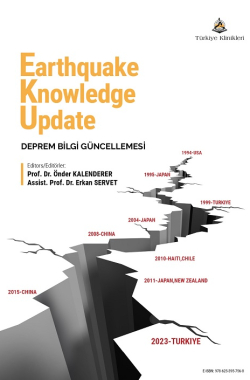AMPUTATION DECISION
Duran Topak1 Ökkeş Bilal2
1Kahramanmaraş Sütçü İmam University, Faculty of Medicine, Department of Orthopaedics and Traumatology, Kahramanmaraş, Türkiye
2Kahramanmaraş Sütçü İmam University, Faculty of Medicine, Department of Orthopaedics and Traumatology, Kahramanmaraş, Türkiye
Topak D, Bilal Ö. Amputation Decision. In: Kalenderer Ö, Servet E, editors. Earthquake Knowledge Update. 1st ed. Ankara: Türkiye Klinikleri; 2025. p.143-149.
ABSTRACT
Amputation is defined as the surgical procedure for the removal of a limb or a part of a limb from the body for any reason. The decision to amputate should be considered as a last resort when the limb has sustained damage beyond repair and does not respond to treatment. Owing to its complex nature, this decision must be made based on evaluations and opinions from various teams. In the context of earthquakes, the amputation process deviates from normal circumstances due to factors, such as a high number of cases, crush injuries and syndrome, delays in accessing healthcare facilities, and prolonged entrapment under debris. Factors influencing the decision for amputation include age, shock, duration of injury, risk of infection, and comorbidities. All these factors should be carefully considered to make the best decision for the overall situation and the individual patient.
Keywords: Amputation; Earthquakes; Crush syndrome
Kaynak Göster
Referanslar
- Bar-On E, Lebel E, Kreiss Y, et al. Orthopaedic management in a mega mass casualty situation. The Israel Defence Forces Field Hospital in Haiti following the January 2010 earthquake. Injury. 2011;42(10):1053-1059. [Crossref]
- Clover AJ, Jemec B, Redmond AD. The extent of soft tissue and musculoskeletal injuries after earthquakes; describing a role for reconstructive surgeons in an emergency response. World J Surg. 2014;38(10):2543-2550. [Crossref] [PubMed]
- Wolfson N. Amputations in natural disasters and mass casualties: staged approach. International orthopaedics, 2012;36, 1983-1988. [Crossref] [PubMed] [PMC]
- Özaksar K, Yıldırım T, Ada S. Deprem sonrası ağır ekstremite yaralanmalarında primer ampütasyon mu, ekstremite kurtarıcı girişim mi? Totbid Dergisi. 2022;22(3):325-332. [Crossref]
- Agel J, Evans AR, Marsh JL, DeCoster TA, Lundy DW, Kellam JF, et al. The OTA open fracture classification: a study of reliability and agreement. Journal of orthopaedic trauma, 2013;27(7):379-384. [Crossref] [PubMed]
- Pape HC, Hildebrand F, Pertschy S, et al. Changes in the management of femoral shaft fractures in polytrauma patients: from early total care to damage control orthopedic surgery. J Trauma. 2002;53(3):452-462. [Crossref] [PubMed]
- Howe HR Jr, Poole GV Jr, Hansen KJ, et al. Salvage of lower extremities following combined orthopedic and vascular trauma. A predictive salvage index. Am Surg. 1987;53(4):205-
- [Crossref] [PubMed]
- Johansen K, Daines M, Howey T, Helfet D, Hansen ST Jr. Objective criteria accurately predict amputation following lower extremity trauma. J Trauma. 1990;30(5):568-573. [Crossref] [PubMed]
- McNamara MG, Heckman JD, Corley FG. Severe open fractures of the lower extremity: a retrospective evaluation of the Mangled Extremity Severity Score (MESS). J Orthop Trauma. 1994;8(2):81-87. [Crossref] [PubMed]
- Russell WL, Sailors DM, Whittle TB, Fisher DF Jr, Burns RP. Limb salvage versus traumatic amputation. A decision based on a seven-part predictive index. Ann Surg. 1991 May;213(5):473-80; discussion 480-1. [Crossref] [PubMed] [PMC]
- Scalea TM, DuBose J, Moore EE, et al. Western Trauma Association critical decisions in trauma: management of the mangled extremity. J Trauma Acute Care Surg. 2012;72(1):86-93. [Crossref] [PubMed]
- Gregory RT, Gould RJ, Peclet M, et al. The mangled extremity syndrome (M.E.S.): a severity grading system for multisystem injury of the extremity. J Trauma. 1985;25(12):11471150. [Crossref] [PubMed]
- Celan MF, Serbest S, Güven N. Earthquake injuries and amputation, our observations and recommendations. Totbid Dergisi. 2022;22(3):325-332.
- Markgraf E, Böhm B, Bartel M, Dorow C, Rimpler H, Friedel R. Traumatische periphere Gefässverletzungen [Traumatic peripheral vascular injuries]. Unfallchirurg. 1998;101(7):508-519. [Crossref]
- Lange RH, Bach AW, Hansen ST Jr, Johansen KH. Open tibial fractures with associated vascular injuries: prognosis for limb salvage. J Trauma. 1985;25(3):203-208. [Crossref] [PubMed]
- Gonzalez D. Crush syndrome. Crit Care Med. 2005;33(1 Suppl):S34-S41. [Crossref] [PubMed]
- Malinoski DJ, Slater MS, Mullins RJ. Crush injury and rhabdomyolysis. Crit Care Clin. 2004;20(1):171-192. [Crossref]
- Orhan, A. Lessons Learned from Crisis Management and Amputation Decisions in the Aftermath of High-magnitude Earthquakes in Kahramanmaras on 6 February 2023. Genel Tıp Dergisi. 2024;34(1):119-123. [Crossref]
- Kundakci B, Mirioglu A, Tekin M, Bagir M, Bicer OS, Arslan YK, et al. 6 February 2023, orthopedic experience in Kahramanmaraş earthquake and surgical decision in patients with crush syndrome. Journal of Orthopaedic Surgery and Research. 2023;18(1):537. [Crossref] [PubMed] [PMC]
- Elliott KG, Johnstone AJ. Diagnosing acute compartment syndrome. The Journal of Bone & Joint Surgery British Volume. 2003;85(5):625-632. [Crossref] [PubMed]
- Sever MS, Vanholder R, Lameire N. Management of crush-related injuries after disasters. New England Journal of Medicine. 2006;354(10):1052-1063. [Crossref] [PubMed]
- Bywaters EG, Delory GE, Rimington C, Smiles J. Myohaemoglobin in the urine of air raid casualties with crushing injury. Biochem J. 1941 Nov;35(10-11):1164-8. [Crossref] [PubMed] [PMC]
- Sonshine DB, Caldwell A, Gosselin RA, Born CT, Coughlin RR. Critically assessing the Haiti earthquake response and the barriers to quality orthopaedic care. Clin Orthop Relat Res. 2012 Oct;470(10):2895-904. [Crossref] [PubMed] [PMC]
- Williams AB, Luchette FA, Papaconstantinou HT, et al. The effect of early versus late fasciotomy in the man agement of extremity trauma. Surgery. 1997;122(4):861866. [Crossref] [PubMed]
- Bingol O, Karlidag T, Keskin OH, Kilic E, Sarikaya B, Ozdemir G. Preventing extremity amputations after earthquakes: a quantitative analysis of fasciotomy and extrication time. Eur J Trauma Emerg Surg. 2023;49(6):2515-2520.

